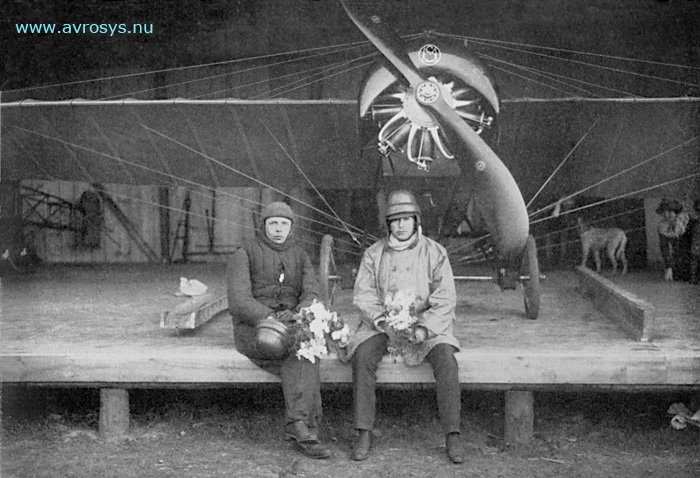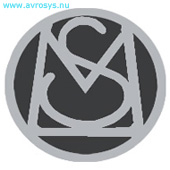|
|
||||||
| Thulin B / Morane-Saulnier M.S. 3G, 1914-1919 | ||||||
| Page 1 (2) | ||||||
|
|
||||||
 |
||||||
|
|
||||||
|
The French Morane-Saulnier M.S. 3G was two-seat aircraft of
conventional, wire-braced, shoulder-wing design.
The construction
was of fabric-covered wood throughout, except for the undercarriage struts
which were of steel tube. Banking was achived by wing warping.
The aeroplane was delivered with a
Gnôme or a Le Rhône rotating engine
according to the buyer's choice.
Main dimensions: Length: 6,88 m. Span: 11,18 m. Height: 3,35 m. Maximum take-off weight: 680 kg. Max. speed: 130 km/h.
|
||||||
|
|
||||||
|
|
||||||
|
|
||||||
|
|
Enoch
Thulin (left) and
Otto Ask
in front of the Morane-Saulnier M.S. 3G after the flight Paris -
Landskrona, which attracted much attention in Sweden. They started from
Villacoublay at Paris on the 25th of April at 04.50 o'clock and landed in
Landskrona four days later. They spent 14 hours and 20 minutes in the
air. The aircraft to the left in the hangar is a Thulin A, a Swedish-made copy of Blériot XI. |
|||||
|
|
||||||
|
|
||||||
|
|
The logotype of the Morane-Saulnier company. It can be seen on the engine cover of the M.S. 3L on the photo above. | |||||
|
|
||||||
|
|
||||||
|
|
||||||
|
|
||||||
|
|
||||||
|
© Lars Henriksson |
|
Updated 2011-05-03 |
||||
|
Custom Search
|
||||||

